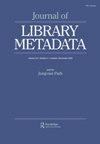图书馆中的学科元数据:应用ISO 19115-北美概况(NAP)描述历史地形图的案例研究
Q2 Social Sciences
引用次数: 0
摘要
许多大学图书馆支持地理信息系统(GIS)的使用,提供了与在线地理资源交互的新方法。由于这些图书馆拥有大量的数字数据,包括地图和地理信息系统,管理和访问变得越来越重要。本文重点介绍并分析了安大略省大学图书馆对加拿大国家地形图系列中的历史地图进行编目、数字化、地理参考和描述的工作。具体来说,我们讨论了使用ISO 19115标准描述这些地图的机遇和挑战,以及由此产生的访问改进,我们认为这对数字时代的地图库来说是革命性的。本文章由计算机程序翻译,如有差异,请以英文原文为准。
Disciplinary Metadata in Libraries: A Case Study Applying the ISO 19115-North American Profile (NAP) for Describing Historical Topographic Maps
ABSTRACT Many academic libraries support the use of Geographical Information Systems (GIS), offering new ways of interacting with geographic resources online. As these libraries host larger amounts of digital data, including maps and GIS, management and access become increasingly important. This article highlights and analyses the work of a group of Ontario University Libraries to inventory, digitize, georeference, and describe historical maps from the Canadian National Topographic Series. Specifically, we discuss the opportunities and challenges in describing these maps using the ISO 19115 standard, and the resulting access improvements which we argue are transformative for map libraries in the digital age.
求助全文
通过发布文献求助,成功后即可免费获取论文全文。
去求助
来源期刊

Journal of Library Metadata
Social Sciences-Library and Information Sciences
CiteScore
2.00
自引率
0.00%
发文量
13
 求助内容:
求助内容: 应助结果提醒方式:
应助结果提醒方式:


